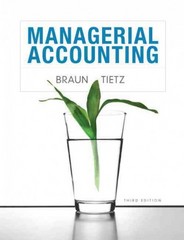I need to find the price, material cost, labor cost, second shift, contribution margin $, and contribution %
Margin Analysis Margin Analysis Being able to calculate a healthy Margin Analysis will help the Research & Development Department understand how to change the cost of material, and the Production Department understand how to change the cost of labor. You will need: The Production Analysis report (page 4) of the Fast Track for Round 0 . The Segment Analysis reports (pages 5-6) of the FastTrack for Round 0 Determining Current Margin 2nd Shift Automation Capacity Primary Units Unit Revision Age Pfmn Size Material Labor Contr. | & Next Next Plant Name Segment Sold Inventory Date Dec.31 MTBF Coord Coord Price Cost Cost Marg. Overtime Round Round Utiliz. Able Low 1,200 87 11/21/2011 3.1 21000 6.4 13.6 $34.00 $16.17 $10.11 20% 63% 3.0 800 161% The product details are for example only. Your product names and data may differ, but the process to calculate margins is identical. Useful formulas: Contribution Margin($) = Price - (Material Cost + Labor Cost) Margin Percentage (%) = Contribution Margin/Price Calculating Margin Activity In the table, enter each product's price, material cost, and labor cost found in your report, and note whether or not a second shift was used (Y/N). Then, use the values you entered to calculate the Contribution Margin and the Margin Percentage. Incomplete Current Margin Product Name Price Material Cost Labor Cost Second Shift (Y/N) C Contribution Margin ($) Contribution Margin (%) Able The Round 0 Foundation FastTrack Determining Margin Potential Finding the maximum amount of profit you can get from one unit of a product is called Margin Potential. This is useful for a company when making a decision about whether to go into production or not. In it's simplest form, it is calculated as: Margin Potential = Maximum Price - Minimum Unit Costs Price Use the customer segment table to find the maximum price that customers deem acceptable. You can find this in the Customer Buying Criteria for each segment. Minimum Material Cost Minimum Labor Cost Calculate the minimum Labor Cost for each segment. Assume a base Calculate the minimum Material Cost per segment using the minimum labor cost of $11.20 ($11.20 is a rough estimate of labor cost used material cost equation: solely to illustrate the Margin Potential Concept). Minimum Material Cost = [(Lowest Acceptable MTBF * 0.30) / 1000] + Minimum Labor Cost = [$11.20 - (1.12 * Automation Ratings Below)] + Trailing Edge Material Cost 1.12 Customer Segment Information Trailing Edge Material Leading Edge Material Lowest Acceptable Maximum Automation Level (out of Cost Cost MTBF Price 10) Low 14,000 $35.00 10.0 Tech $1.50 $8.50 High 6.0 Tech $4.00 $10.00 17,000 $45.00







